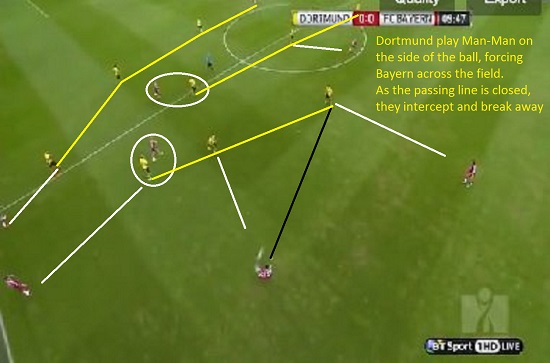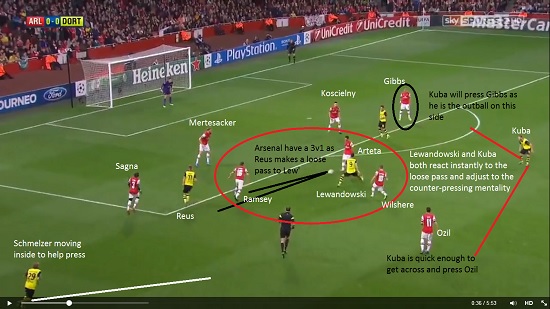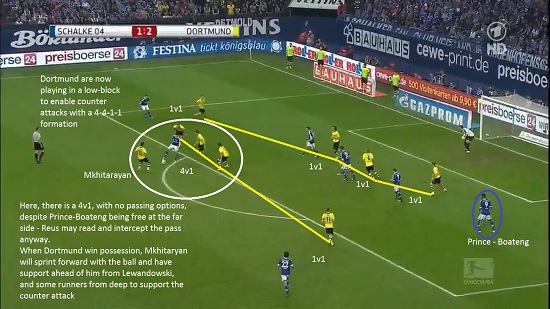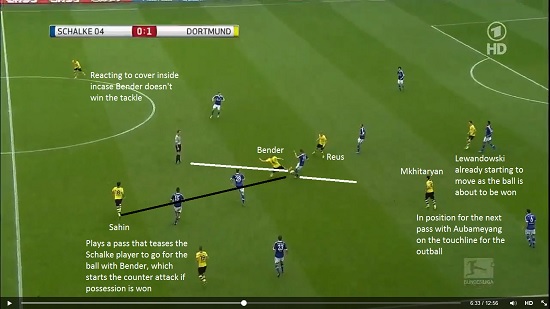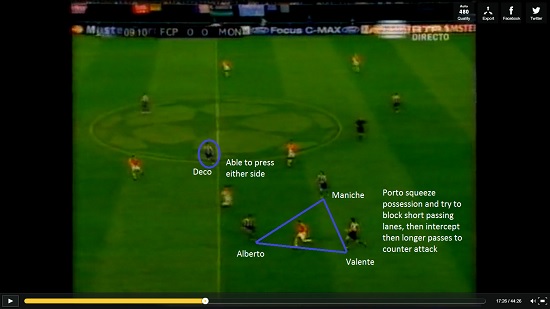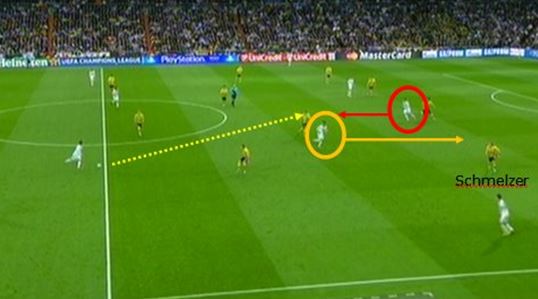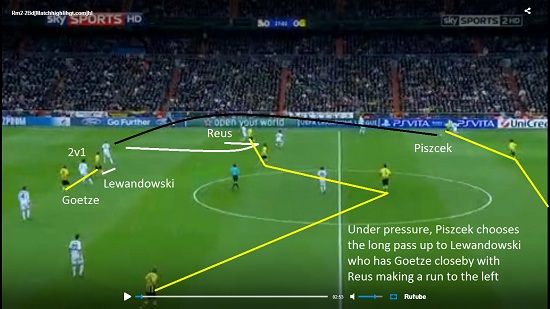By Stevie Grieve, author of Coaching the 4-2-3-1 and Attacking in the 4-2-3-1.
One of Borussia Dortmund’s main strengths comes from the speed of which they attack, and the fluidity of the movement of the players in the front 4, a choice of either Blaszczkovski or Aubameyang, with Mkhitaryan, Reus and Lewandowski. All of these players have explosive pace, especially Aubameyang.
They have an interesting mix of attackers; Lewandowski brings old fashioned target man ability while having the combination play of a midfielder. Mkhitaryan brings balance to the attack as he fills in and opens up space well while combining with the midfield and providing a consistently good final ball, while Reus brings flair and penetration with runs from deep. Aubameyang offers penetration behind the defensive line as he likes to play high (similar to Walcott at Arsenal), while Kuba is the most defensive minded of the group, and is a vital part of the team balance – he will play deeper as Reus moves forward to play ahead of Lewandowski.
Borussia Dortmund have also perfected the art of ‘Counter-Pressing’ where the team press the ball after losing it, to win it back within 6 seconds, to ‘counter counter-attack’ and the speed of transition is a major way that they score goals.
Dortmund Mid-Block Positioning – Ball with full back or wide positioned center back.
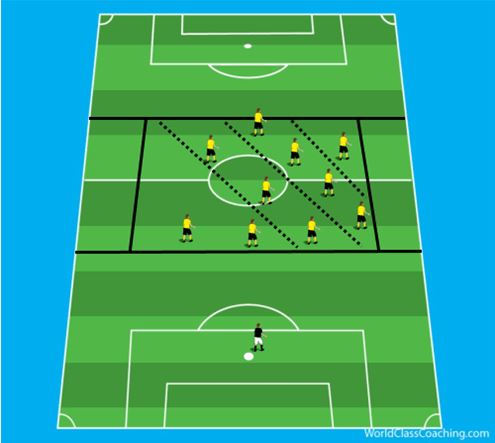
Dortmund like to force play to one side, then ‘trap the opponent into passing into a specific opponent either on the
Continue reading

